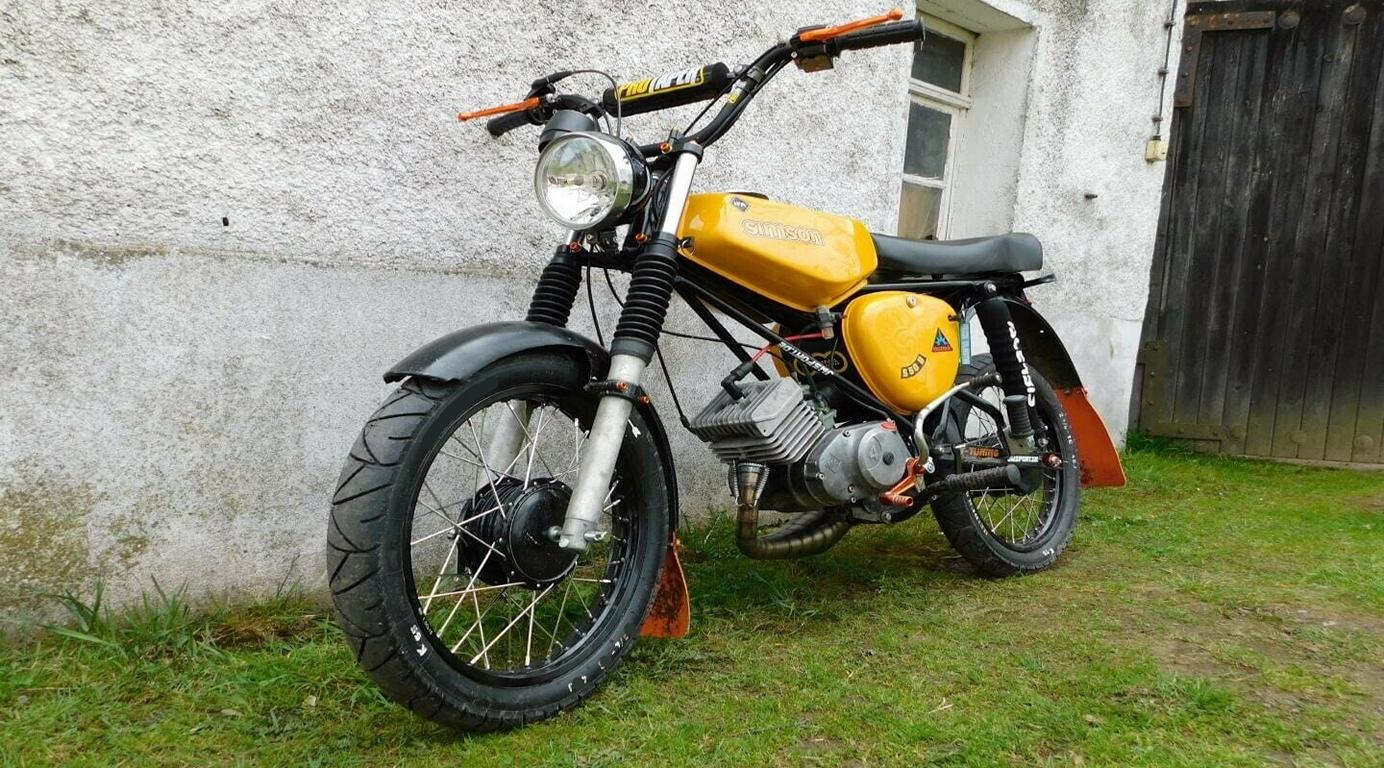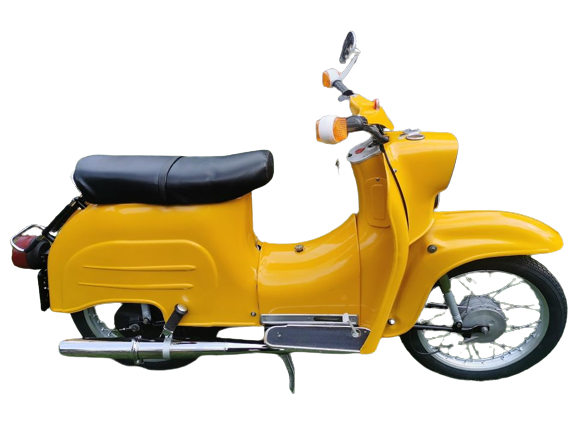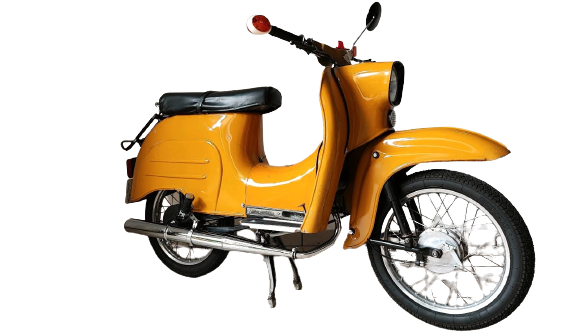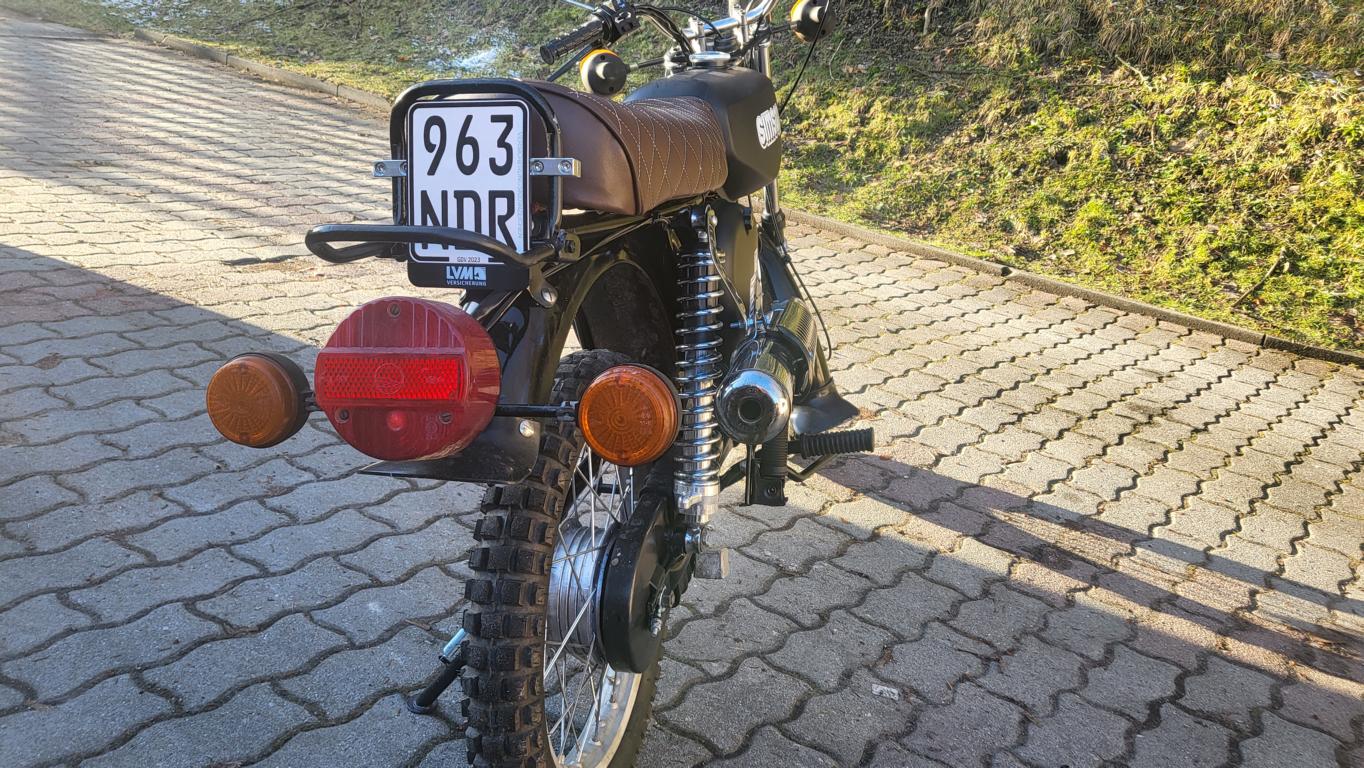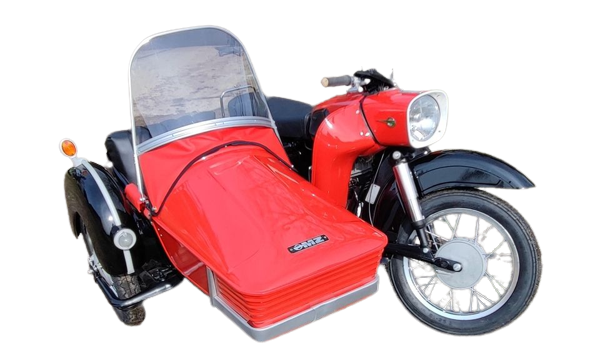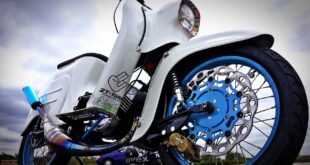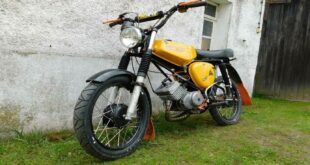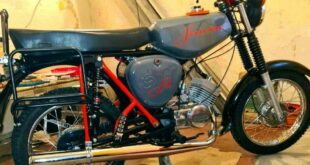The German Democratic Republic (GDR) was a socialist state that existed from 1949 to 1990. During this time, the GDR developed its own vehicle industry, which was primarily known for its two-wheeled models. This article gives an overview of the different mopeds and motorcycles that were manufactured in the GDR. Simson was one of the best-known manufacturers of mopeds and motorcycles in the GDR. The company was based in Suhl and produced a variety of models that were popular with both the population and the authorities.
the mopeds of the GDR
- Samson SR1 (1955-1957): The first Simson moped, introduced in 1955 and fitted with a 47,6cc two-stroke engine. It reached a top speed of about 40 km/h.
- Samson SR2 (1957-1959): The successor to the SR1, which featured improved suspension and a more powerful 49,9cc engine.
- Samson Swallow (1964-1986): The Schwalbe was one of the most famous mopeds of the GDR and was produced in different model variants (KR51/1, KR51/2, KR51/1F, KR51/1K, KR51/2N, KR51/2E). With a displacement of 50 cm³ and a maximum speed of 60 km/h, the Schwalbe was the ideal means of transport for many GDR citizens.
- Samson Star (1968-1972): Another Simson moped that was available in two versions (SR4-2/1 and SR4-2). It was equipped with a 50 cc engine and a top speed of 60 km/h.
- Samson Sparrowhawk (1971-1975): The Sparrowhawk was a sportier moped that was built in two versions (SR4-3 and SR4-3/1) and featured a 50cc engine.
the motorcycles of the GDR
- Simson AWO 425 (1950-1960): The first motorcycle by Simson, which was built in two versions (AWO 425T and AWO 425S). The AWO was equipped with a 250 cm³ four-stroke engine and reached a top speed of around 100 km/h.
- Simson S50 (1975-1980): A light moped with a 50cc two-stroke engine that reached a top speed of 60 km/h. It was produced in different versions (S50B, S50B1, S50B2).
- Simson S51 (1980-1989): The successor of the S50, which was built in different versions (S51B, S51B1, S51B2, S51C, S51E). The moped also had a 50 cc two-stroke engine and reached a top speed of 60 km/h.
MZ (Motorcycle Plant Zschopau)
MZ was another important manufacturer of motorcycles in the GDR. The company was founded in 1906 and produced a variety of models until 2008.
2.1 Mopeds
- MZ ES 125/150 (1962-1978): A moped with a 123 cc or 143 cc two-stroke engine and a top speed of 75 or 85 km/h. It was produced in different variants (ES 125, ES 125/1, ES 150, ES 150/1).
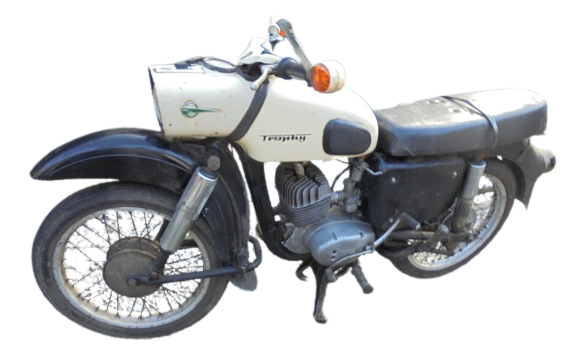
2.2 Motorcycles
- MZ RT 125 (1949-1962): A lightweight motorcycle with a 125cc four-stroke engine and a top speed of around 80 km/h.
- MZ ES 250 (1956-1962): A motorcycle with a 243 cc two-stroke engine and a top speed of around 110 km/h.
- MZ TS 250 (1973-1981): The successor to the ES 250, which was equipped with a 243 cc two-stroke engine and reached a top speed of around 110 km/h.
- MZ ETZ 250 (1981-1990): Another motorcycle with a 243cc two-stroke engine and a top speed of around 110 km/h. The ETZ 250 was also built in a 300 cm³ version (ETZ 300).

the Krause Duo from the GDR
- The (ambulance) duo was a handicapped accessible three-wheeled small vehicle from the GDR that was specially developed for people with physical disabilities. It was manufactured by Krause-Werk in Leipzig from 1968 to 1991. It had two rear wheels and a single front wheel, which provided increased stability. The Krause duo was powered by an air-cooled 49,6 cm³ two-stroke engine, which offered an output of 2,7 to 3,4 hp and made a top speed of around 60 km/h possible. The vehicle had a semi-automatic 3-speed constant-mesh gearbox and automatic centrifugal clutch in an oil bath and was equipped with an electric starter (DUO 4/2) fitted.
- The duo offered space for two people and was equipped with a weather protection roof to make journeys more comfortable even in bad weather. It was also possible to customize the duo with various add-on parts and accessories in order to adapt it to the needs. Overall, the Krause Duo was an important tool for people with restricted mobility in the GDR, enabling them to participate in everyday life and maintain their independence.
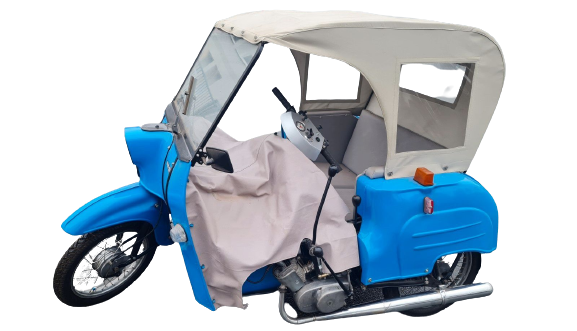
Two-wheelers with a sidecar from the GDR
In the GDR there were various two-wheelers that could be equipped with a sidecar. The motorcycles with sidecars were primarily intended for use by authorities, the police, border troops, the post office and the Red Cross, but were also used by private individuals. Some of the most popular models are:
- MZ ES 250/2 team (1959-1978): The MZ ES 250/2 Gespann was based on the MZ ES 250 motorcycle and was equipped with a sidecar. The motorcycle had a 243 cc two-stroke engine and reached a top speed of around 100 km/h. The sidecar had a stable chassis and could accommodate an additional person.
- MZ BK 350 (1952-1959): The BK 350 was a motorcycle with a boxer engine, which had a displacement of 343 cm³ and an output of 17 hp. The motorcycle could be combined with a sidecar to carry extra passengers or luggage. The BK 350 was the first mass-produced motorcycle with cardan drive in the GDR.
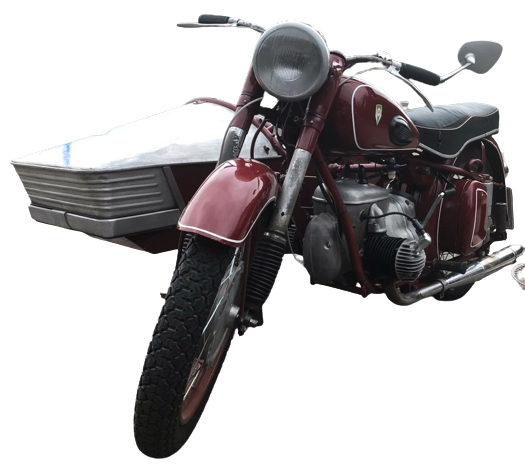
- Simson AWO 425T team (1950-1960): The AWO 425T was a motorcycle with a 250 cc four-stroke engine and a top speed of around 100 km/h. It could be fitted with a sidecar to carry extra passengers or luggage.
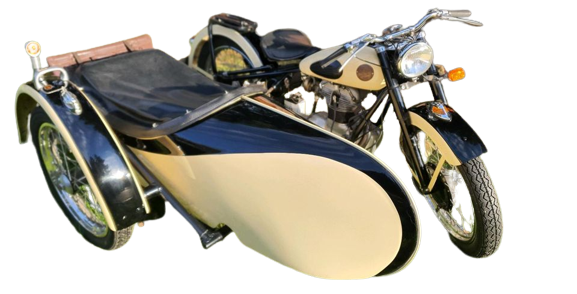
- IWL TR 150 Troll 1 (1960-1964): The IWL TR 150 Troll 1 was a scooter that could also be combined with a sidecar. The scooter had a 150 cc two-stroke engine and reached a top speed of around 75 km/h. The sidecar offered space for one more person and was equipped with a stable chassis.
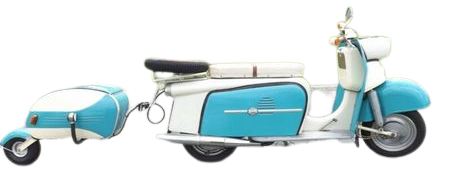
The aforementioned two-wheelers with sidecars offered a practical option in the GDR for transporting several people or a lot of luggage over longer distances and were used by private individuals as well as by authorities and institutions.
Conclusion
- East Germany had a diverse range of mopeds and motorcycles made by companies such as Simson and MZ. The vehicles were indispensable for many citizens of the GDR and are still valued today as cultural assets and collectors' items. Although the automotive industry in the GDR experienced a decline after the reunification of Germany, the names Simson and MZ are still closely linked to the history of the country.
Of course, that was far from it. Our tuning magazine has countless other tuning reports in stock. And also with the topic Motorcycle and motorcycle tuning we meet regularly. Do you want to see all posts about motorcycles and motorcycle tuning? Just click HERE and look around. Or is a small extract enough? Then take a look at the following Mopped posts.
other related posts
|
Simson Tuning - Improve the performance and appearance of the GDR classic! |
|
 tuningblog.eu Your magazine about tuning the car
tuningblog.eu Your magazine about tuning the car
